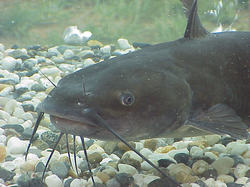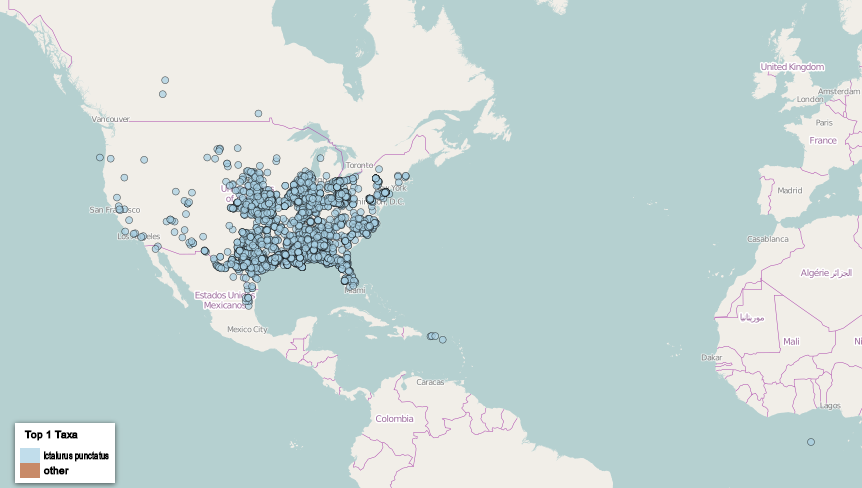The Channel Catfish: Did you know?

Originally residents of the southern United States, channel catfish have become abundant and widespread throughout North American waters. Channel catfish show high tolerance for a wide variety of habitats and can survive in streams, lakes, reservoirs, and even brackish water near the Gulf Coast. These fish are easily recognized by their long, whisker-like barbels for which the species gets its name. Because visibility is low in deep and turbid waters, catfish often use taste buds located on their barbels and other body surfaces to locate food.
Channel catfish prefer to be in dark, secluded spaces when they spawn, which occurs only once per year for female fish. In this process, the female will deposit thousands of eggs onto a patch that a male has cleared. The male will then fertilize these eggs and guard them until they hatch. Thus, channel catfish are a species in which males provide the majority of parental care. Determining how once-localized species like channel catfish have become so common is enabled by the availability of biodiversity research specimens. A purpose of the National Science Foundation's Advancing Digitization of Biodiversity Collections program (ADBC) is to digitize specimen data and make it globally available online. iDigBio is the National Resource for ADBC—it facilitates digitization of the nation's one billion biodiversity research specimens, serves the digital data at the iDigBio portal, and facilitates research, education, and other activities made possible by the availability of the data. Credits: Project Lead: iDigBio 3-D Editors: Adam Chmurzynski and Anne Basham Digitized Ictalurus punctatus specimens in biological collections.
Click the map to explore the iDigBio database. |



